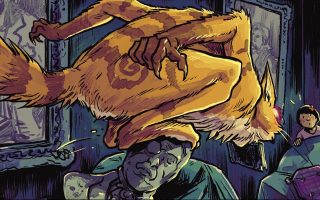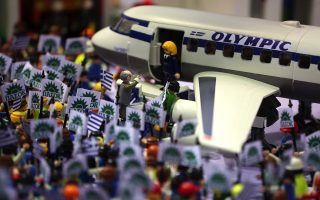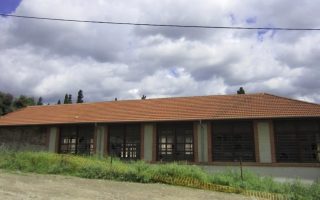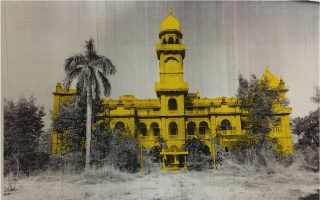The bumpy road traveled by the Acropolis Museum
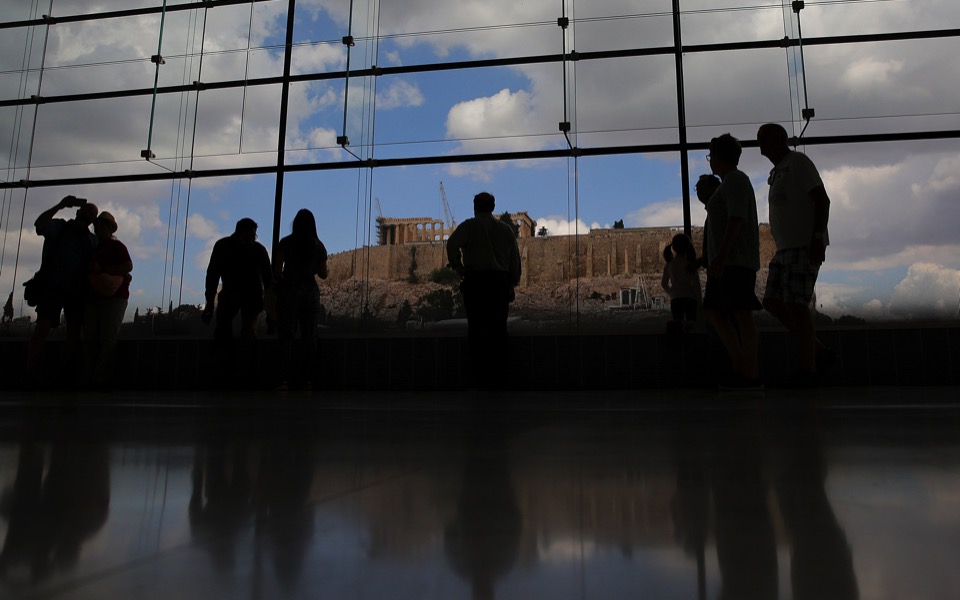
Every so often, Acropolis Museum President Dimitrios Pandermalis will see a familiar face in the crowd. “Some of the people who reacted negatively to the museum’s construction are now coming as visitors,” he says. Seven years since its launch, and averaging 4,000 visitors a day, the museum today is a firm and much-lauded fixture in Greece’s cultural life, yet there was a time when this major state initiative divided public opinion like no other.
Other than the usual obstacle of Greek bureaucracy, the process of getting the museum built included a lengthy judicial battle that is fairly typical of the kind of thing that goes on behind the scenes during any major project in this country.
“I started becoming familiar with the court system when I became president of the Organization for the Construction of the New Acropolis Museum (OANMA) in 2000,” Pandermalis tells Kathimerini.
Almost every sector of the judicial system was involved in the issue in one way or another, culminating in criminal charges being brought against OANMA and other parties involved in the museum’s construction by an Athens first instance prosecutor in 2004. “I found myself in the office of an investigating magistrate for the first time in my life, waiting for a decision on whether we would be remanded in custody,” says the respected academic. The case never reached a court room, but it took three years before the charges were dropped by the Council of Appeals Court Judges.
The beginning of the museum’s misadventures lie more than two deaces earlier, however. It was June 1977 when Kathimerini first wrote: “The architectural competition for the new museum attracted 26 studies that are being assessed by the committee of judges. The project will be completed within three years.”
The need for a new museum to house the wealth of exhibits from the Acropolis was first expressed in 1976 by then prime minister Constantine Karamanlis, but the first call for proposals went without response, as did a later one in 1979. Even then there were reactions to the proposed site of the new museum in the populous neighborhood of Makriyianni in the Greek press, a public debate that continued to a lesser or greater degree for two decades, peaking after 2000.
Another competition was held in 1989, and this time it was international, resulting in the arrival of 438 teams of researchers. The Makriyianni location continued to stir reactions and the architectural plan failed to stipulate measures for protecting antiquities found on the site. Although a winning design was chosen, the Council of State ruled in favor of the Association of Architects in 1993 and canceled the competition over procedural issues. “Our dream has been annulled,” then culture minister Melina Mercouri told the media, expressing her disappointment.
OANMA was set up in 1995 as a private company to smooth the bureaucratic path. After the fourth successive competition since 1976, an international committee selected a proposal in 2001 by Bernard Tschumi and Michael Photiades, but the project met with obstacles at every step of the way.
Between 1993 and 2004, the Council of State examined more than 10 demands for the project to be scrapped at various phases. The discovery of artifacts on the construction site just made the endeavor that much more complicated.
Everyone involved in the new museum’s construction was prepared to face a major battle by residents and the owners of buildings slated for demolition in the Makriyianni area. However, the reactions were not always limited to legal means. Former officials of the Culture Ministry and OANMA remember a man from a house that was being appropriated harassing construction workers through a megaphone every single day for several years.
Pandermanlis also recalls several incidents with residents demanding a halt to the work, saying that they had a court order to that effect but it had not been issued yet. “I’m not going to stop until the bailiff turns up,” he’d responded.
“I remember being accused of destroying an ancient temple when we demolished the basement lavatories of the old gendarme station,” Pandermalis recounts.
In another incident, Pandermalis was suddenly summoned to the administrative appeals court one morning to respond to accusations that there was photographic evidence of an excavator digging at the site of archaeological finds. “It was a large rock that couldn’t be removed by hand, so it was shifted with the excavator,” he says.
There were times when both sides called in the police, as was the case in late March 2002. Members of a citizens’ movement opposed to the construction called the police saying that the jackhammers and bulldozers were destroying antiquities. At the same time, the archaeological service had asked for help to stop protesters harassing the construction crew.
Pandermalis explains that the project was designed to protect and showcase the antiquities found on the Makriyianni plot. He never thought he of all people would be accused of destroying antiquities.
“If I were to destroy antiquities, I would be like a judge who violates his code of ethics or a doctor who breaks the Hippocratic oath. It would rock my very existence. I would never be able to cover something like that up,” he says.
Visitors to the Acropolis Museum today can see part of the excavation of the Makriyianni plot through the glass floor at the entrance and plans are in the pipeline for a basement area to be turned into an exhibition of the plot’s fascinating contents.
One-vote rescue
OANMA’s legal adviser at the time, Dimitris Kourkoumelis, explains that while many different means were employed to stop the construction, the final decision rested with the Council of State, the country’s highest administrative court. In 2004, with a majority of just one vote, the court rejected all claims that antiquities were being threatened and gave the project the green light.
“I was very anxious about the ruling,” remembers Pandermalis. “I felt the entire responsibility resting on my shoulders, the symbolic and the actual responsibility. Imagine abandoning a building just after you’ve poured the concrete and leaving behind a modern ruin.”
The last bump in the road was criminal charges filed against the organization’s board, members of the Central Archaeological Council and the jury of the architectural competition, following a suit filed in March 2003 by New Democracy MP and later deputy culture minister Petros Tatoulis for antiquities destruction. Tatoulis later dropped his suit, but claimed that his intervention would force his successors to be more cautious.
“All of those things belong in the past. It’s over,” says Pandermalis. Now his biggest concern is keeping people coming to the museum so that it evolves into a “public house of treasures,” where the public will feel at home among the ruins – and he appears to be succeeding.

